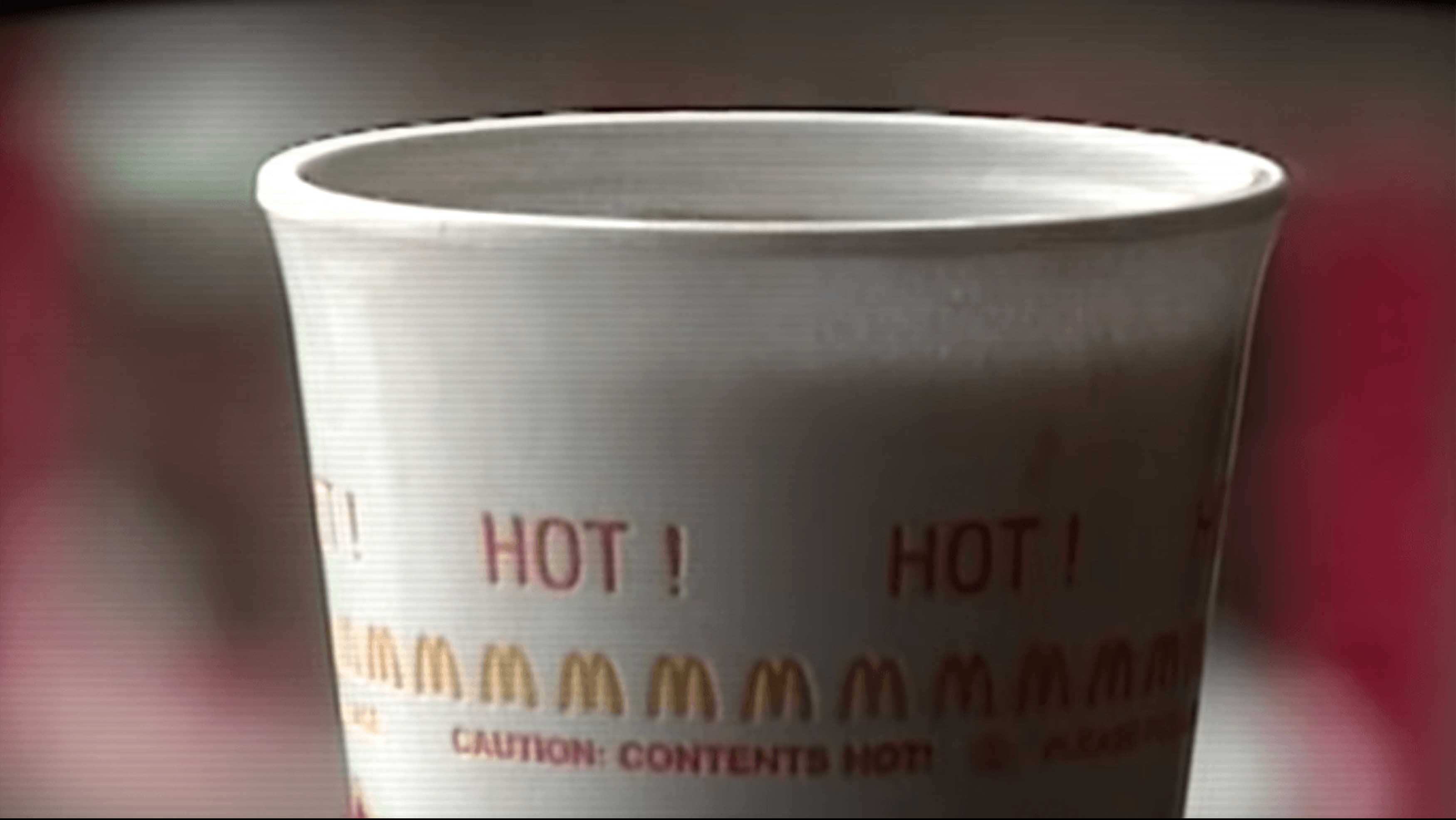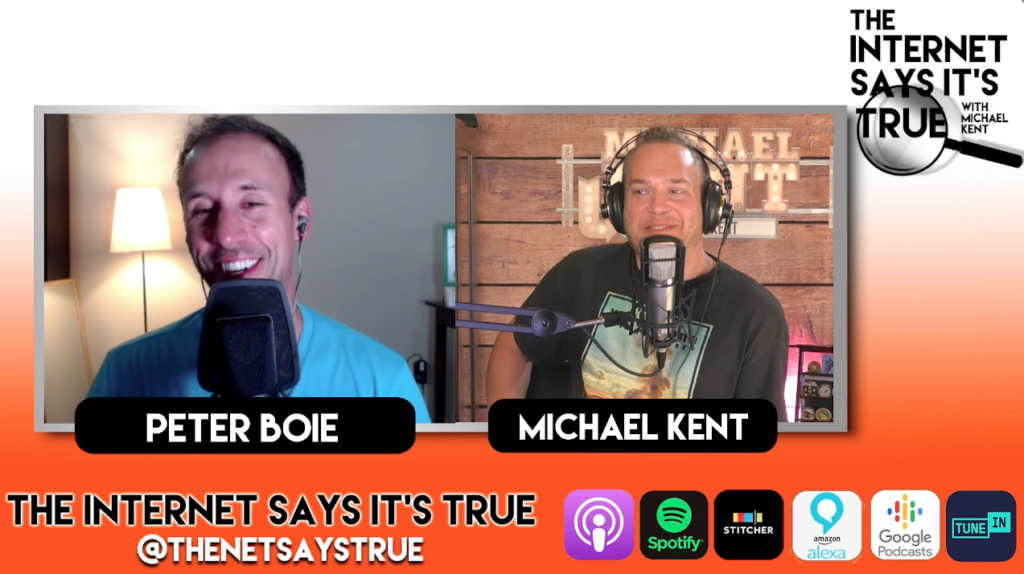The Hottest Coffee: The McDonald’s Coffee Lawsuit
For decades, the story about the woman who sued McDonald’s because her coffee was too hot has been used as an example of frivolous lawsuits. But the truth is much different than the legend! In this episode, we explore this case in detail and learn that you may have heard it all wrong! Then we play the quick quiz with Magician, Peter Boie!

When I say the phrase “frivolous lawsuits,” you probably think of one case in particular. The woman who sued McDonald’s because her coffee was too hot. It happened in 1992 and it’s a real thing that we’ll talk about in just a little bit. But that case changed everything in the way that the American public sees lawsuits. It had a multi-faceted effect. Once the public saw this lawsuit and judged it as frivolous, they expressed outrage and backlash at the legal system in general, started blaming everything on a bogged-down legal system, AND engaged in actual frivolous lawsuits. Once they saw it working once, they thought, “why can’t this work for me?”
So we saw some crazy lawsuits result. Like the inmate who tried to sue himself for violating his civil rights. Or the guy who just happened to look like Michael Jordan who sued the real Michael Jordan because people kept mistaking him for the famous basketball player and he found it inconvenient. Or how about this one – a woman sued two little girls in Colorado because they delivered cookies to her home and it caused her a stress-induced panic attack.
All of these are examples of ACTUAL frivolous law suits. But the hot coffee at McDonald’s lady? When you really look into it, it’s not all that frivolous.
Here’s the story you may have heard. An old woman was driving her car through the McDonald’s drive through, got her coffee, put it between her legs and it spilled on her, so she sued McDonalds because the hot coffee burned her a little.
I mean, after all – we know that the court awarded this woman almost 3 million dollars and that makes an incredible headline. The public reaction was “you mean we’ve come to a place in society where you’re not responsible if you spill a hot drink on yourself?”
The real story is quite different than the legend that most people think they know.
On February 27, 1992, Stella Liebeck was the passenger in a car being driven through a drive through at McDonald’s in Albuquerque. Her grandson’s Ford Probe didn’t have cupholders, so she held her 49-cent cup of coffee in her hands until her grandson could pull over into a parking spot. Once the car was stopped, she wanted to add cream and sugar to her coffee. Needing both hands, she put the cup of coffee between her legs and pulled the far side of the lid up. When she did this, the whole cup tipped over into her legs and seat, pouring the entire cup of coffee.
The result? Burns over 16% of Liebeck’s body, including 3rd-degree burns on 6% of her body. She was in the hospital for 8 days undergoing skin grafts on her inner thighs and parts of her groin, lost 20 lbs and was partially disabled for 2 years, needing constant care from her daughter.
Now, if you’re super brave and you’re not squeamish, there are actually photos of Liebeck’s burns on the Internet. I remember when a teacher in college showed these as part of class. And I have no idea what the class was or how these were pertinent, but I remember the first time I saw them, it completely changed my mind about this case. I had always thought of the case as one of these frivolous lawsuits until I saw how bad these burns actually were. They’re awful.
The truth is, Liebeck was wearing cotton sweatpants which absorbed and held the liquid next to her skin. The coffee had been served at between 180 and 190 degrees Fahrenheit.
Liebeck sued McDonald’s and sought to settle for $20,000 – to cover her medical bills. We now know the court case became legendary.
When Stella Liebeck was burned by her cup of coffee at McDonald’s, it put her in the hospital for over a week.
She and her daughter didn’t set out to sue McDonald’s for millions. Their response was actually quite conservative.
Liebeck and her daughter wrote a letter to the McDonald’s Corporation, asking 3 things:
1 – For the coffee machines to be checked in every store to make sure they are in proper working order and not overheating the coffee.
2 – If the coffee machines are working properly, for McDonald’s to evaluate the procedure and temperature to which the coffee should be heated.
3 – They asked for $20,000 to cover actual and anticipated expenses –
Stella’s hospital bills were already more than $10,000 with more expected, and the daughter had lost income from needing to take off of work to provide home care for Stella.
McDonald’s offered $800.
This escalated things, so Liebeck got an attorney and filed suit with U.S. District Court of New Mexico. They cited Gross Negligence, saying that McDonald’s was selling a product that was unreasonably dangerous and defectively manufactured. They first asked to settle for $90,000 – McDonald’s refused, and Liebeck’s lawyer raised it to $300,000. A mediator stepped in and suggested that $225,000 was an appropriate settlement amount. McDonald’s refused again, so the case went to trial.
It was during this time that several things came to light. McDonalds WAS serving their coffee at a temperature of between 180-190 degrees. Their reason for serving it so hot was that their customers were commuting and they wanted the coffee to remain hot during their drive to work in the morning. Experts testified that 190 degree coffee would produce 3rd degree burns in a matter of just a few seconds. When you make a coffee at home – it’s usually somewhere between 140-150 degrees, and if you put it in a ceramic mug, it cools down even more.
The trial also produced evidence that McDonalds had previously settled claims of people being burned by coffee that was too hot for as much as $500,000. And had been receiving reports about the coffee problem for the last ten years. 700 of them!
The jury ended up deciding that while 20% of the blame was on Stella Liebeck, 80% of the blame was on McDonald’s. The coffee cup had a warning, but the jury decided it wasn’t big enough. They awarded her $200,000 for compensatory damages and $2.7 million in punitive damages. This number was apparently arrived at because they thought an appropriate punishment for the restaurant would be two days of coffee sales. Worldwide, McDonald’s made about $1.35 million dollars a day in coffee sales.
Now that’s not what the restaurant ended up paying. The judge reduced the punitive damages to something closer to $480,000 and the two parties ended up settling out of court and nobody knows what amount that really was. It was a lot more than the $20,000 the Liebecks original asked for.
The news of the case blew up across the country. And regardless of the facts, the more intriguing headline was that this was a frivolous lawsuit. Those headlines were so effective that people still point to the McDonald’s hot coffee case today – 30 years later – as a textbook case in the need to end frivolous lawsuits and to promote tort reform.
The tort reform talk ramped up in the early and mid 90s. It was pushed by Republican lawmakers to protect businesses from lawsuits. They were pushing for a $250,000 cap on lawsuits from defective products.
It was the result of corporations spending millions lobbying congress to try to protect them from lawsuits brought by their own consumers. The U.S. Chamber of Commerce even lobbied to unseat judges who were opposed to tort reform that they wanted.
President Clinton rejected the idea and by doing so, helped protect families who need to sue based on faulty products and services.
So what you thought you knew about the lady who got burned by McDonald’s may not necessarily be the truth. Sometimes legends are hard to defeat when they’re more interesting than the truth. And in this case – it wasn’t a frivolous lawsuit. The coffee was just too damn hot. The Internet Says it’s True.
Review this podcast at https://podcasts.apple.com/us/podcast/the-internet-says-it-s-true/id1530853589
Bonus episodes and content available at http://Patreon.com/MichaelKent
For special discounts and links to our sponsors, visit http://theinternetsaysitstrue.com/deals
Use promo code “INTERNET” for 15% off skincare products at www.aldernewyork.com


